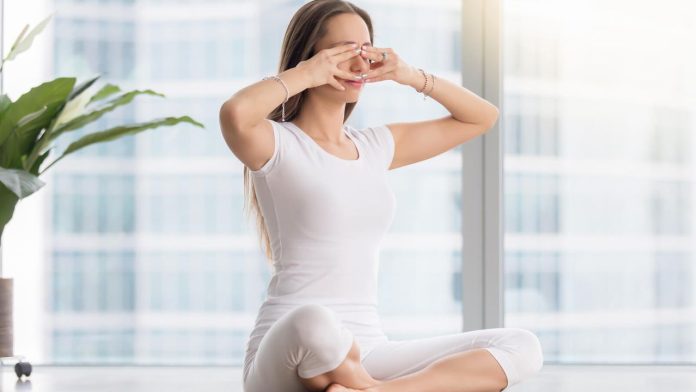Longer periods of time spent at work in front of a computer screen might cause an increase in the amount of stress and strain that the eyes are subjected to. Eye strain is not only detrimental to productivity but also has the potential to weary a person physically and mentally.
Including yoga as part of your daily routine can be quite good for reducing eye strain and improving your vision. In the long run, practicing particular yoga postures will help protect your eyes from strain and fatigue, which will ultimately lead to improved eye health.
The following five yoga asanas can help you keep your eyes healthy.
1. Tadasana, also known as the Mountain Pose: Bring your big toes together and bring your heels closer together. Actively engage your core muscles, relax your shoulders down and back, and take deep breaths for five to eight breaths while you actively engage your leg muscles.
2. Padahastasana, also known as the Standing Forward Bend: It is performed by first standing in Samasthithi, then exhaling while gradually bending your upper body and lowering your head while maintaining a calm posture in the shoulders and neck. Put your palms on the floor on either side of your feet, and then slowly straighten your knees while you work toward bringing your torso closer to your thighs. This will take some practice. Maintain this pose for a few breaths.
3. Vajrasana, also known as headstand: Put your palms together and place your elbows on the ground in a prayer position. Put the top of your head on the ground in front of your palms and use them as support. Place your hands on the floor. Continue bringing your toes up toward your head until you feel a straightening of your back. After you have lifted your right leg, lift your left leg as well, and then align it with the rest of your upper body while utilizing the strength and balance of your core. Hold this position for as long as is comfortable for you, making sure that your legs are together and that your toes are pointed down.
4. Halasana, also known as the “Plow Pose,” requires you to lie on your back and place your palms on the ground beside you. Engage the muscles in your core area, and raise your legs so that they form a 90-degree angle. Maintain a solid pressing motion with your palms into the ground as you bring your legs behind your head. If it’s necessary, you can use your palms to support your lower back. Maintain the stance for anywhere between 15 and 20 seconds by holding it for a few breaths at a time.
5. Wheel Pose, also known as Chakrasana: Lie down on your back. Put both hands on the ground next to your head, and then rotate them at the shoulder joint. Take a long, deep breath in and arch your back as you elevate your entire body into the air, being sure to distribute your body weight evenly among all four of your limbs. Maintain the position for fifteen to twenty seconds.

 हिंदी
हिंदी






